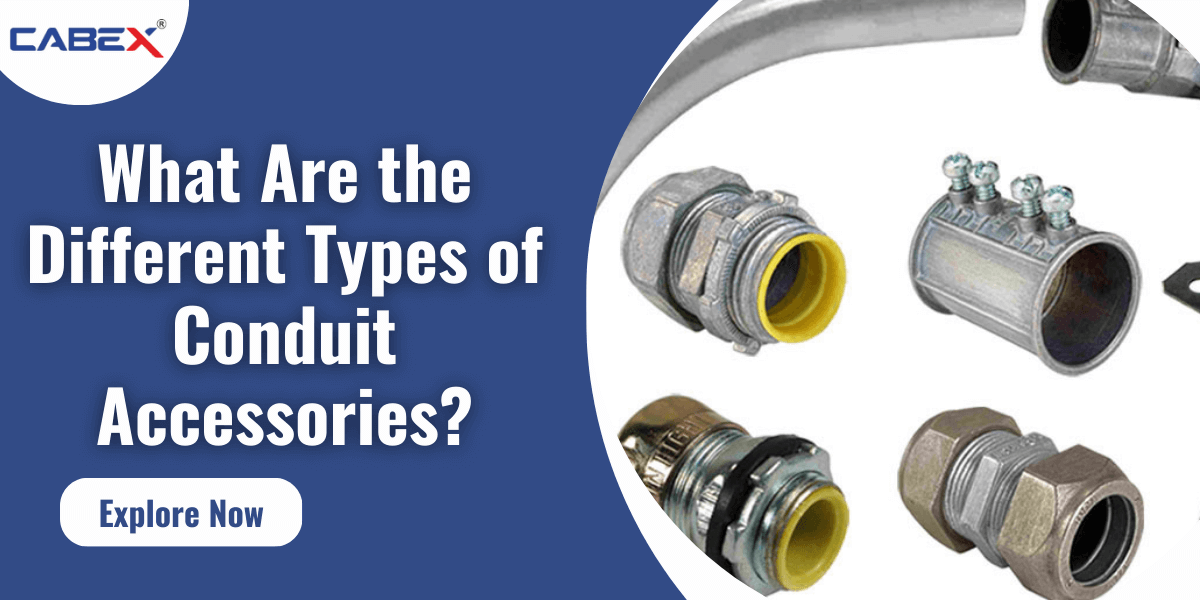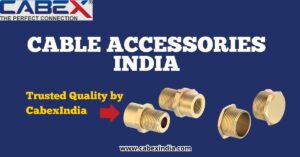In the intricate realm of electrical systems, the efficiency and durability of conduit accessories play a pivotal role. These essential components not only safeguard the integrity of wiring but also contribute to the overall functionality of the system. In this exhaustive exploration, we delve into the diverse landscape of conduit accessories, shedding light on their types, applications, and the indispensable role they play in ensuring seamless electrical installations.
Ensure Safety & Compliance with Our Certified Cable Glands
Industrial environments demand the highest standards of safety. Our explosion-proof and industrial cable glands are engineered for durability, reliability, and certified protection.
- Industry-leading quality and certifications
- Protection against fire, dust, and moisture
- Customized solutions for every application
👉 Ready to upgrade your safety?
Explore Explosion Proof Cable Glands |
View Industrial Cable Glands |
Discover Explosion Protection Solutions
Understanding the Essence: Conduit Accessories in a Nutshell
Before embarking on a detailed journey into the various types of conduit accessories, let’s first understand the fundamental purpose they serve. Conduit accessories are integral components designed to enhance the performance, organization, and protection of electrical conduits. These conduits, conduits being the protective tubes that house electrical wires, are indispensable for routing and securing wiring systems in various environments.
Exploring the Vast Array: A Panorama of Conduit Accessories
1. Conduit Couplings
At the heart of conduit systems, couplings emerge as the linchpin that connects two conduit sections, providing a seamless and secure joint. The robust construction of these couplings ensures structural integrity, while their versatility accommodates diverse conduit materials, including metal and PVC.
2. Conduit Connectors
For the conduits to form a cohesive and efficient network, connectors step in as the facilitators. These connectors come in an array of designs, from straight connectors to 90-degree connectors, adapting to the spatial constraints of diverse installations.
3. Conduit Straps
Maintaining the alignment and stability of conduits is entrusted to conduit straps. These unassuming accessories, available in various materials such as stainless steel and plastic, ensure that conduits are securely fastened to surfaces, mitigating the risk of displacement or damage.
4. Conduit Bushings
Where conduits penetrate through surfaces, the significance of conduit bushings becomes apparent. These accessories act as insulating barriers, preventing abrasion and damage to wires as they navigate through walls or panels.
5. Conduit Elbows
Navigating around corners in electrical installations demands the prowess of conduit elbows. These curved fittings facilitate the smooth transition of conduits, maintaining an uninterrupted flow while adhering to the spatial constraints of the environment.
6. Conduit Locknuts and Washers
The integrity of conduit connections is fortified by locknuts and washers. These unobtrusive yet essential accessories secure conduits to junction boxes, guaranteeing a snug fit and mitigating the risk of loosening over time.
7. Conduit Caps
Sealing the deal, literally, conduit caps emerge as the guardians of open conduit ends. These caps prevent the ingress of dust, moisture, or contaminants, ensuring the longevity of the enclosed wiring system.
8. Conduit Hubs
Facilitating the entry or exit of conduits from junction boxes or enclosures, conduit hubs are the gateway keepers. Available in various sizes and materials, they cater to the specific needs of different conduit installations.
9. Conduit Grounding Bushings
In the pursuit of safety and compliance, grounding conduit systems is imperative. Conduit grounding bushings play a crucial role in establishing a reliable ground connection, minimizing the risk of electrical faults.
10. Conduit Adapters
When transitioning between conduit sizes or types, conduit adapters come into play. These adaptive accessories ensure a seamless connection, allowing for the amalgamation of different conduit systems without compromising structural integrity.
Navigating the Landscape: Applications and Considerations
1. The Industrial Terrain
In industrial settings, where robustness and durability are paramount, metal conduit accessories often take the spotlight. Conduit couplings with heavy-duty threading, conduit straps forged from galvanized steel, and robust conduit elbows become stalwart companions in these demanding environments.
2. The Residential Realm
Conversely, in residential installations where aesthetics often intertwine with functionality, PVC conduit accessories gain prominence. Lightweight yet resilient, these accessories blend seamlessly into residential landscapes, ensuring a secure and visually pleasing conduit network.
3. Environmental Considerations
The choice of conduit accessories is also influenced by environmental factors. Stainless steel variants, resistant to corrosion, find their niche in coastal areas, while UV-resistant PVC accessories thrive in outdoor installations exposed to sunlight.
Different Types of Conduit Accessories: A Synthesis of Knowledge
In recapitulation, the realm of conduit accessories is a multifaceted landscape, comprising various components that synergize to fortify electrical installations. From conduit couplings providing seamless joints to conduit caps guarding against external elements, each accessory plays a distinct role.
As we traverse this intricate terrain, the significance of understanding the different types of conduit accessories becomes apparent. The adaptability, materials, and functions of these accessories contribute to the resilience and efficacy of electrical conduit systems.
The Distinctive Edge: Flexible Conduit Accessories
Amidst the myriad of conduit accessories, a subset stands out – the flexible conduit accessories. As the nomenclature implies, these accessories cater to the dynamic nature of flexible conduits, offering a specialized solution for installations requiring agility and adaptability.
1. Flexible Conduit Connectors
Designed to accommodate the pliability of flexible conduits, these connectors provide a secure yet flexible joint, allowing for the dynamic movement of the conduit without compromising the connection.
2. Flexible Conduit Fittings
Ensuring a snug fit for flexible conduits, these fittings come in various shapes and sizes, offering a versatile solution for installations that demand flexibility without sacrificing structural integrity.
In Conclusion: The Tapestry of Conduit Accessories
In unraveling the intricacies of conduit accessories, we discover a tapestry woven with precision and purpose. From the stalwart conduit couplings to the adaptive conduit adapters, each accessory contributes to the resilience and efficacy of electrical conduit systems.
As technology advances and electrical installations evolve, the importance of understanding the nuances of conduit accessories becomes increasingly vital. Whether in industrial landscapes or residential abodes, the seamless integration of these accessories ensures not only the safety of wiring systems but also the longevity and efficiency of the entire electrical infrastructure.
Frequently Asked Questions (FAQs) about Conduit Accessories
Q1: What are the primary functions of conduit couplings?
A1: Conduit couplings serve as essential connectors, seamlessly joining two conduit sections. Their robust design ensures structural integrity and compatibility with various conduit materials like metal and PVC.
Q2: How do conduit straps contribute to electrical installations?
A2: Conduit straps play a crucial role in maintaining alignment and stability. These accessories securely fasten conduits to surfaces, preventing displacement and ensuring a tidy and organized wiring system.
Q3: What is the purpose of conduit grounding bushings?
A3: Conduit grounding bushings are pivotal for safety and compliance. They establish a reliable ground connection, minimizing the risk of electrical faults and ensuring a secure conduit system.
Q4: Why are flexible conduit accessories necessary?
A4: Flexible conduit accessories cater to dynamic installations, offering solutions for flexible conduits. Connectors and fittings designed for flexibility enable secure connections without compromising structural integrity in agile environments.
Q5: How do conduit caps contribute to the longevity of electrical systems?
A5: Conduit caps act as guardians, sealing open conduit ends against dust, moisture, and contaminants. This protective barrier ensures the longevity and reliability of the enclosed wiring system over time.
You May Also Like: What Is Flexible Conduit Connector & Used For?





